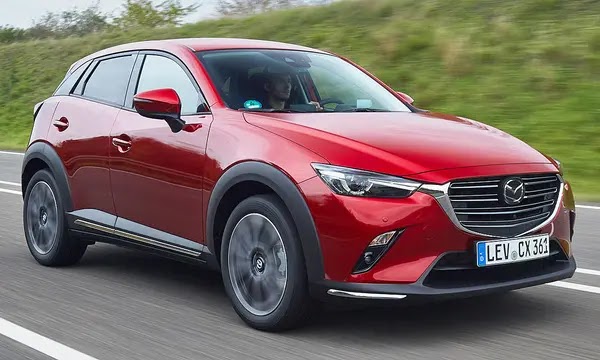Japanese cars have long been celebrated for their reliability, efficiency, and quality. Brands like Toyota, Honda, and Nissan have built a reputation for producing vehicles that deliver consistent performance. However, not all Japanese cars live up to this esteemed reputation.
Despite the overall perception, some models fail to meet expectations in terms of design, reliability, or value. This article explores 10 Japanese cars that, while popular, may not be worth their cost. Whether it's due to high maintenance costs, design flaws, or simply being outperformed by competitors, these cars might not be the best investment.
The Myth of Japanese Car Reliability
The reputation of Japanese cars being synonymous with quality is well-earned but not universal. Over the years, brands have produced certain models that failed to hit the mark. This can happen for various reasons, including aggressive cost-cutting measures, lack of innovation, or simply being outclassed by more advanced competitors. Let’s explore these vehicles more thoroughly.
10 Japanese Cars That Aren't Worth the Cost
1. Nissan Juke (2011-2017)
The first generation of the Nissan Juke produced between 2011 and 2017, was known for its quirky design, but the compact SUV had several drawbacks. It struggled with limited interior space, awkward styling, and a lackluster driving experience. Mechanical issues, particularly with the turbocharged engine, further diminished its appeal.
2. Mitsubishi Mirage (2014-Present)
The Mitsubishi Mirage, particularly from the 2014 model year onwards, has been widely criticized for its underpowered engine and cheap build quality. Even the newer models still suffer from poor safety ratings, noisy cabins, and an uncomfortable ride. Despite updates, it remains a budget car with significant compromises.
3. Toyota Yaris iA (2016-2018)
The Toyota Yaris iA, particularly the models produced from 2016 to 2018, had limited features and unimpressive engine power. This sedan, which was essentially a rebadged Mazda2, struggled to stand out in a market filled with more feature-rich and better-performing compact cars.
4. Honda Clarity (2018-2020)
The Honda Clarity models from 2018 to 2020 aimed to offer an eco-friendly hybrid and electric experience but faced criticism due to high prices, limited electric range, and a lack of infrastructure support for charging. The car's bulky design and underwhelming interior also didn't justify its cost.
5. Subaru Ascent (2019-2021)
The Subaru Ascent, particularly the models from 2019 to 2021, was marketed as a family-friendly SUV. However, it has been plagued by issues, including transmission problems and engine reliability. Many owners reported frequent trips to the dealership, making it less reliable than Subaru's usual standards.
6. Nissan Leaf (2011-2015)
Early versions of the Nissan Leaf, especially models from 2011 to 2015, were pioneers in the EV market but suffered from rapid battery degradation. This led to reduced range and higher maintenance costs. While newer models have improved, the earlier models still present concerns for those considering a used EV.
7. Suzuki Celerio (2015-2019)
The Suzuki Celerio, particularly from 2015 to 2019, was marketed as an affordable, no-frills vehicle. However, it had significant drawbacks, including poor performance, minimal comfort, and a lack of modern safety features. It struggled to compete with other budget cars that offered more value for the same price.
8. Mazda CX-3 (2016-2021)
Mazda's CX-3 models from 2016 to 2021 are stylish and fun to drive, but they have issues that make them less practical. The cramped interior space, limited cargo capacity, and higher price compared to competitors have been frequent criticisms. Many buyers found they could get more space and features from rival brands for the same cost.
9. Mitsubishi Eclipse Cross (2018-2022)
The Mitsubishi Eclipse Cross, introduced in 2018 and continuing into 2022, faced criticism for its uninspired design and lackluster performance. Limited engine options and an outdated interior, combined with below-average driving dynamics, made it less appealing than other compact SUVs.
10. Lexus NX (2015-2021)
The Lexus NX models from 2015 to 2021 have been criticized for not living up to the luxury standards expected from the brand. Despite its premium price tag, the NX's performance is often seen as underwhelming compared to rivals like the BMW X3 and Mercedes-Benz GLC. Additionally, the interior quality didn't always meet the expectations set by Lexus’s more prestigious lineup.
Final Thoughts
While Japanese automakers have a reputation for quality, these specific models and years illustrate that not all cars are created equal. Each of these vehicles had aspects that made them less appealing, whether it was high maintenance costs, poor design choices, or simply being outclassed by competitors. When considering a purchase, it's essential to do thorough research and compare different models, keeping long-term value in mind.
➤ Read also:
FAQs
Why are some Japanese cars unreliable? ▼
Despite their general reputation, some models may suffer from design flaws, cost-cutting measures, or a lack of innovation, leading to reliability issues.
Are older models better than newer models for Japanese cars? ▼
Not always. Older models may have issues like outdated technology or mechanical wear, but some newer models have also been problematic due to unrefined designs.
Is it worth buying a used Japanese car? ▼
Yes, but always check the car’s service history, maintenance records, and reliability reviews to ensure it’s a sound investment.
How can I check the reliability of a Japanese car? ▼
Refer to trusted automotive reviews, consumer reports, and owner forums for detailed insights on any car’s performance and reliability.
Which Japanese brands are the most reliable? ▼
Toyota, Honda, and Mazda consistently rank high in reliability studies, thanks to their attention to detail and consistent quality.










.webp)